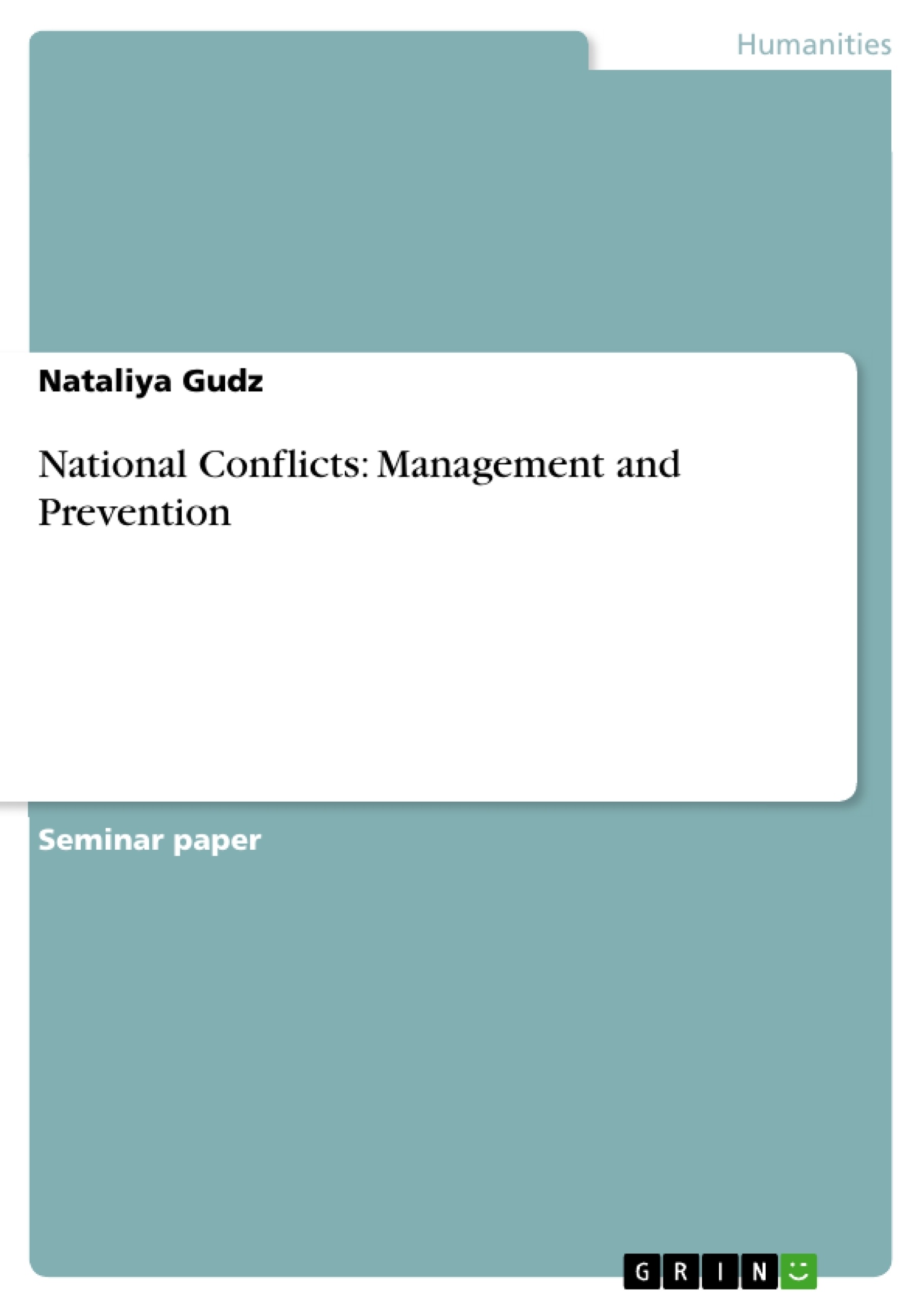The post-Cold War change in political priorities brings with itself incompatibilities. Market competition and free trade have increased prosperity for some nations and groups but left others behind. Peace and human rights do not always go hand in hand. Democratisation and increased popular participation in government can lead to minority rights abuses. Economic development and democratisation cannot always be achieved simultaneously; in the long run, these values may be reconcilable, but in the short run, they can generate tensions.
Conflicts around the world have not declined, despite the end of the Cold War. From 1989 through 1993, a total of 90 large and small-armed conflicts occurred. At any given time, the number of violent conflicts fluctuates around 50 each year.
That′s why in the post cold-war era, it has become more important than ever that the three actors in conflict prevention and resolution - governments, non-governmental organisations (NGOs) and intergovernmental organisations - went hand in hand. The crucial lesson learned from the previous peace processes had been that there could be no peace without the participation and the will of the parties and the populations involved, for which participation of civil society was fundamental.
Table of Contents
- Preface
- 1. Conflict: issues, types and dynamics
- 1.1. Conflict issues
- 1.2. Conflict types
- 1.3. Conflict dynamics, or escalation
- 2. The incidence of conflicts
- 3. The continuum from war to harmony
- 4. The outcomes of conflicts
- 4.1. Avoidance
- 4.2. Conquest
- 4.3. Submission or Deterrence
- 4.4. Compromise
- 4.5. Award
- 4.6. Passive Settlement
- 5. Institutions and procedures for resolving conflicts
- 5.1. Negotiations
- 5.2. Mediation
- 5.3. Adjudication and arbitration
- Conclusions
Objectives and Key Themes
This paper explores the nature and dynamics of national conflicts in the post-Cold War era, examining their causes, types, and potential resolutions. It emphasizes the crucial role of governments, NGOs, and intergovernmental organizations in conflict prevention and resolution, underscoring the need for collaboration and participation from all stakeholders.
- Conflict dynamics and escalation
- The role of governments, NGOs, and intergovernmental organizations in conflict resolution
- The impact of conflict on human security and structural stability
- Different approaches to conflict resolution, including avoidance, conquest, compromise, and mediation
- The importance of participation and the will of the parties involved in conflict resolution
Chapter Summaries
The paper begins by defining conflict, outlining its various types, and exploring the dynamics of conflict escalation. It highlights the role of incompatible positions in territorial jurisdiction, rights on territory, and control over ethnic minorities as major sources of international conflict. The paper then examines the incidence of conflicts in the post-Cold War era, acknowledging the continued presence of armed conflicts despite the end of the Cold War. Subsequent chapters delve into the continuum from war to harmony, exploring various outcomes of conflicts, including avoidance, conquest, submission, compromise, and passive settlement. Finally, the paper examines institutions and procedures for resolving conflicts, focusing on the roles of negotiation, mediation, adjudication, and arbitration in conflict management.
Keywords
The central focus of this paper revolves around national conflicts, their management and prevention. Key themes include conflict types, dynamics, and resolution, the role of governments, NGOs, and intergovernmental organizations, human security, structural stability, and the importance of stakeholder participation. Other prominent concepts include negotiation, mediation, adjudication, and arbitration as tools for conflict resolution.
- Arbeit zitieren
- Nataliya Gudz (Autor:in), 2003, National Conflicts: Management and Prevention, München, GRIN Verlag, https://www.grin.com/document/24817



